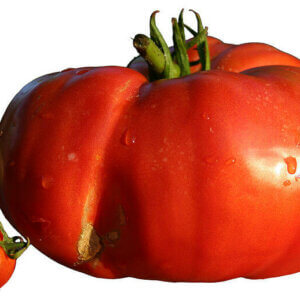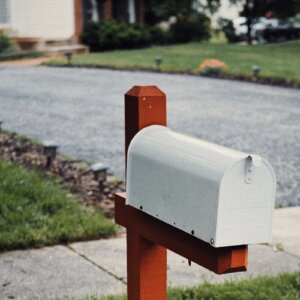Table of Contents
While newspapers are excellent carbon material for composting, you should dispose of glossy newsprints elsewhere. Shredded newspaper mitigates excess moisture in watery piles and helps retain heat in hot compost piles. The carbon in newspapers also promotes the growth of beneficial microorganisms.
Most composting methods can transform daily newspapers into nutrient-rich soil amendment, but if you don’t prepare newspapers correctly, they can clump and block oxygen flow. You can also make affordable homemade Bokashi bran out of newspapers as a better alternative.

To protect the microorganisms in your compost pile, avoid glossy newspapers. Instead, dispose of them correctly or consider other options mentioned below.
Continue reading for a comprehensive guide on home composting newspapers.
How to Compost Newspaper
Correct preparation is key for a successful compost out of daily newspapers. It takes time to break down. Like other paper-based products, newspapers have large amounts of lignin, a substance found in plant cell walls. This component strengthens plant cell wall rigidity, making it difficult to compost.
Many organic composters worry about potential chlorine contamination from newspapers. Chlorine was the primary bleaching agent of newsprint manufacturers in the past. In more recent times, however, hydrogen peroxide, a safer alternative, has been widely sourced and used.
Today, newsprints use soy- or water-based inks instead of petroleum-based inks that contain heavy metals. Even though these eco-friendly newspaper inks are harmless to your garden, if you prefer your compost to remain 100% organic, it may be better to exclude newspaper waste.
Preparing Newspaper for Composting
Before you compost your newspapers, make sure to place your compost pile or bin in a sunny location close to a water source. The key to breaking down newspapers effectively is a combination of heat, light, and water.
Examine your compostable newspaper and remove any nonbiodegradable components. Plastic tags or stickers attached to the newsprint can hinder proper decomposition of your organic materials.
Avoid glossy or laminated newsprints for best results. These newspaper types contain petrochemicals, which can harm your compost and garden soil.
Instead of using whole newspapers, tear or cut them into smaller pieces which will decompose more quickly, creating a healthier soil amendment. Using heaps of uncut newspaper could obstruct the flow of oxygen which is vital for efficient decomposition. Without adequate aeration, your compost pile may develop slow anaerobic decomposition and cause unpleasant odors. Cutting your newspaper in small pieces will enhance the efficiency of your compost pile.
Mix your shredded newspaper with other compost ingredients, and make sure you maintain the best composting conditions listed below.
Optimal Composting Conditions for Newspaper
To create nutrient-rich compost from newspapers, it’s essential to maintain a good balance of carbon-rich brown materials and nitrogen-rich green materials. Kitchen waste like fruit and vegetable cuttings or yard wastes like fresh grass clippings are great sources of nitrogen. Besides shredded papers, dead leaves, and untreated sawdust are packed with carbon. Layer these materials alternately, and strive for the ideal carbon:nitrogen ratio of 25 to 30 parts of carbon to every 1 part of nitrogen.
Keep your compost pile or compost bin wet, but not soggy. Adequate moisture is necessary to successfully break down newspaper or any paper product. Add more water if needed, and turn the pile to evenly distribute moisture. If the pile becomes too wet, add more newspaper pieces so their paper pulp can effectively absorb excess moisture.
When hot composting newspaper, aim for the optimal temperature range between 90 and 140 degrees Fahrenheit. Regular turning of your compost pile introduces oxygen, stimulating the heat generated by microorganisms.
By carefully managing your compost pile under these conditions, you can convert newspaper clippings into healthy compost.
How Long Does Newspaper Take to Compost?
Newspapers can decompose in a well-maintained compost pile within 4 to 6 weeks. The rate of decomposition significantly depends on the availability of oxygen, moisture, and optimal temperature.
How Newspaper Affects the Composting Process
Newspaper carbon content boosts microbial activity within your compost pile. But adding huge amounts of incorrectly prepared newspaper can impede air flow and cause clumping issues.
Impact on Decomposition
When prepared correctly, newspapers can support efficient decomposition within the pile. Shredded newspapers break down faster. Avoid delayed decomposition and prevent clumps by cutting compostable newspapers first.
The composting community of microorganisms will greatly benefit from a carbon-rich material like newspaper.
Microbial Activity
A thriving community of microorganisms enhances your compost pile’s efficiency. Keep a balanced ratio of green and brown materials. As brown composting material, newspaper stimulates microbial growth.
Make sure to avoid glossy or laminated newspapers because they contain chemicals that could harm the composting microorganisms.
Temperature and Moisture
Paper products like newspapers hold heat and absorb excess moisture due to their paper pulp content. They also introduce air pockets into the compost, which promotes oxygen flow and helps maintain the ideal composting temperature range of 90 to 140 degrees Fahrenheit for hot piles.
Newspapers are useful substitutes if you’re out of dried leaves. Besides absorbing excess moisture, they supply your natural materials with carbon.
Minimal amounts of newspaper should be fine to compost, but huge quantities of the material can lead to clumping and obstruct proper aeration.
Potential Issues With Composting Newspaper
Newspapers generally don’t create significant composting issues in a well-managed pile. However, mishandling and mismanagement can give rise to nuisances like pests and foul odors.
Will Composting Newspaper Attract Pests?
Composting newspaper in an efficient pile or bin shouldn’t draw pests. Refrain from adding uncut newspaper to avoid clumps that can obstruct oxygen flow. Regulate moisture levels to prevent anaerobic conditions, which can produce foul smells that entice pests.
Turn your compost heap regularly and maintain optimal composting conditions to yield compost quality.
Will Composting Newspaper Cause Odors?
While newspapers themselves don’t attract pests, if anaerobic decomposition occurs in your compost pile, the resulting odor from other organic wastes might attract critters. To prevent this problem, aim for the best composting conditions and properly prepare your paper waste.
Methods for Composting Newspaper
Due to their carbon content, newspaper scraps are suitable for common composting methods.
Hot Composting
Hot composting can effectively transform shredded newspapers into a healthy compost. This method of composting largely depends on the heat created by microorganisms to decompose organic matter. Achieving and maintaining the ideal temperature range of 90 to 140 degrees Fahrenheit requires consistent pile turning and temperature checks.
Newspapers are great at absorbing water and retaining heat. The carbon from such material enhances the growth of composting microorganisms, which in turn supports the heat generation in the pile.
Cold Composting
If you’re new to composting, you may want to consider cold composting your newspaper scraps. It’s the simplest composting method, requiring you to combine balanced layers of green and brown materials. Aim for an ideal ratio of 25 to 30 parts of carbon to every 1 part of nitrogen.
Most of the decomposition process is carried out by environmental elements and natural microbes, requiring minimal human intervention.
Bear in mind, though, that without an intense heat source, cold composting produces compost more slowly than other methods.
Vermicomposting
Compostable newspapers can be used as worm bedding. Cut up your newspapers and combine with other bedding materials like coconut coir or untreated wood chips. Newsprint with nontoxic (soy- or wax-based) ink are fine to vermicompost. If you are uncertain about the newspaper’s ink composition, discard them completely or contact its manufacturer.
Gradually introduce your newspaper bedding to your worm bin. This way, your worm farm can adjust easily.
Bokashi Composting
Instead of buying expensive Bokashi bran, how about you create your own from newspaper?
Originating from Japan and Korea, Bokashi method ferments composting ingredients in a specialized Bokashi container, sealed tightly to keep out oxygen. Microorganisms from the Bokashi bran usually thrive in carbohydrates and proteins from food scraps. Unlike other methods, Bokashi composting can process dairy products and meat.
To start producing your own Bokashi bran out of newspapers, you’ll need Lactobacillus serum, molasses, and water. Soak your newspapers in the liquid mixture, and drain. The wet newspapers should be stored in an airtight container for 10 days or two weeks. For a step-by-step guide, read more at Bocashi blog site.
Alternatives to Composting Newspaper
Not all homes have readily available compost piles or compost bins. Consider other sustainable alternatives below.
Industrial Composting of Newspaper
Industrial composting facilities offer pick-up services and drop-off options for paper wastes from households and offices. This is a great alternative if a home compost is not available.
Contact your local facility to find out how they accept household newspapers.
Recycling Newspaper
In the United States, newspapers and other paper wastes make up a significant 12% of all landfill trash. When you throw your newspaper into a bin, you not only contribute to this percentage, but also to the production of greenhouse gas. Certain states have set up actions and regulations to minimize this environmental issue.
States like Columbia, New Jersey, Pennsylvania, Rhode Island, and Wisconsin require recycling of paper materials, while the cities of Seattle and Ohio offer recycling programs for wastes like newspapers. You can use this recycling locator to find your nearest recycling center.
Recycling facilities collect recyclable papers from residences or offices. Recycling bins for paper-based products are also available in some cities. The collected paper waste undergoes various recycling processes such as de-inking, pulping, shredding, and sorting. The resulting paper sheets from discarded newspapers are sent to paper product manufacturers.
If you have concerns on waste management or recycling, contact your respective state agency.
Upcycling Newspaper
Yesterday’s newspapers have countless uses in your home and garden. Explore these imaginative options!
Newspaper as Glass Polisher
Wipe marks and leftover fibers often come from using cloths and paper towels to clean glass surfaces. A trick to this nuisance? Use your discarded newspapers as glass polishers.
To make a natural cleaner, mix equal amounts of white vinegar and water. Spray this mixture on your mirrors or windows, then crumple a newspaper into a ball and use it to wipe horizontally for a streak-free glass surface.
Newspaper as Fire Kindling
During cold nights, there’s nothing more comforting than sitting by a fireplace. Uncoated newspapers are ideal as fire kindling. However, the United States Environmental Protection Agency does not advise burning coated or glossy newspapers because their content can negatively impact air quality at home.
Collect your old newspapers, squeeze them into balls, and place them in your fire pit. Add your dry wood or charcoal. Carefully light them and enjoy a cozy atmosphere.
Newspaper as Weed Suppressor
Annoying weeds can be a headache for gardeners. Aside from stealing the nourishment intended for your plants, they can also be harmful to animals and humans. You can prevent weed growth by covering your garden soil with uncoated newspaper.
After you’ve finished reading your newspaper, lay it over your soil and add 3 to 4 inches of carbon material like dead leaves or untreated sawdust. These materials will hold the newspaper pages in place and stop them from blowing away.
Newspapers are even more effective than plastic weed suppressants because newspaper fibers allow water to seep into your soil.
By using newspaper as a weed suppressant, you’ll block essential sunlight from reaching unwanted weeds, effectively killing them.
Newspaper as Gift Packaging
Whatever holiday or celebration you’re attending, newspaper is a flexible wrap to match the design you desire.
Glue, pencil, scissors, and water-based paint are the typical supplies you’ll need for this craft. The New York Times has some artful ideas for newsprint bows to top your wraps!
Disposal Options for Newspaper
If none of the options are feasible, properly segregate your newspaper scraps and dispose of them in an appropriate garbage bin.
What Newspaper Shouldn’t Be Composted?
Newsprint with glossy pages shouldn’t go to your compost pile or compost bin. These papers are coated with petrochemicals, and their colored inks contain heavy metals. Ensure the safety of beneficial composting microorganisms and dispose of these laminated newspapers elsewhere.
Safety and Precautions When Composting Newspaper
Aim for the ideal composting conditions and prepare your newspaper scraps properly. Supply your compost heap with adequate oxygen and moisture to avoid issues from composting newspapers.
After your composting activity, wash your hands with soap and running water.
FAQ
Can I compost glossy newspaper pages?
Glossy newspapers are not ideal for composting due to their synthetic coatings. Adding glossy newspapers can hinder proper decomposition of your organic materials, harm beneficial microorganisms, and leak toxic chemicals into your compost pile or bin.
How often should I turn my compost pile containing newspapers?
Adequate supply of oxygen is necessary to successfully convert newspapers to compost. Turn your pile for aeration every two weeks to give the pile time to heat up and decompose. You may use a garden fork or a shovel when doing so.
Could newspaper ink be harmful when composting?
Modern-day printers of newspapers use nontoxic soy- or water-based inks. These ink sources do not pose a threat to your compost and soil. Discard glossy, colorful newspapers as they may contain heavy metals from or other petrochemicals from synthetic inks.










































Leave a Reply